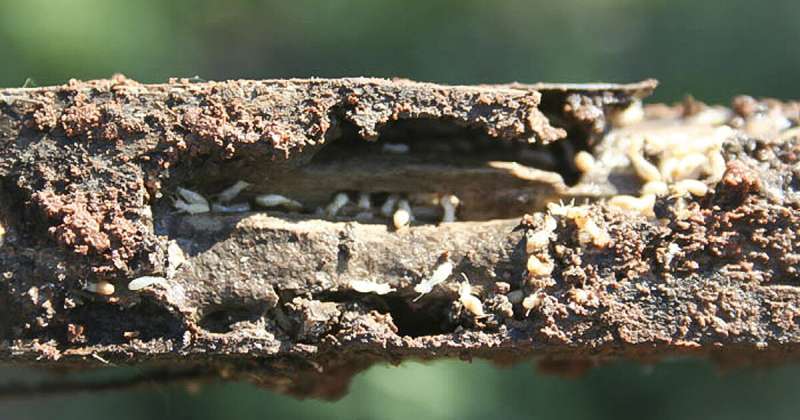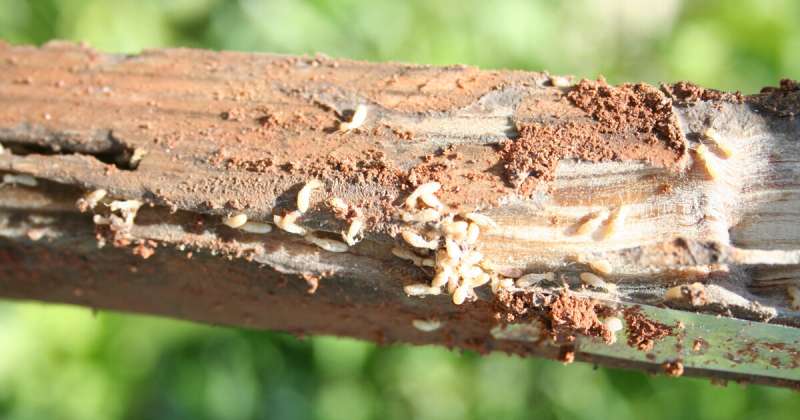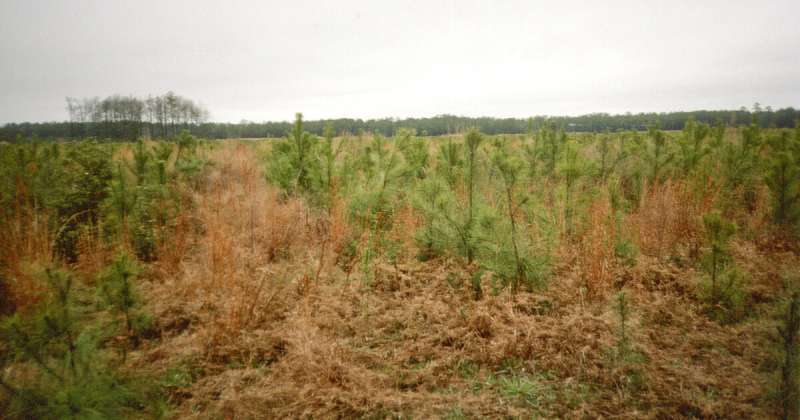Hard-working termites crucial to forest, wetland ecosystems

Termites are unwelcome in your home. They can cause structural damage to the wood in frames, floors and other materials. It's nothing personal, though. They are really just looking for food sources.
But, outside, in the natural environment, termites are part of an entire ecological system. Their role is to help turn dead trees into valuable organic matter.
And, a recent study showed that termite activity in the soils of wetlands can help improve soil structure and nutrient content.
To study this question, Deborah S. Page-Dumroese and her colleagues researched various types of bedding systems in eastern South Carolina. "Microorganisms and termites are the primary wood decay agents in forests of southeastern United States," says Page-Dumroese. Previous research showed that raised planting beds on poorly-drained soils greatly improve the survival and growth of planted seedlings. Page-Dumroese's research team showed that bedding in wetlands could be a good management practice, too.
Page-Dumroese is a scientist with the USDA Forest Service, Rocky Mountain Research Station, in Idaho. She worked with team members in Michigan and South Carolina. The wetlands are part of the forest service. "There are many forested wetlands within national forests—particularly in the north and southeast" says Page-Dumroese. "But, there are some in the mountainous west as well."

The decay of dead trees (and any plant product) produces organic matter. And, this organic matter can increase crucial soil carbon content. All living things are made of carbon, and it is important to keep carbon in the soil (carbon sequestration) because it helps hold and filter water, reduces nutrient leaching, and improves forest health.
Researchers created beds in the study area using tractors. This mixed surface organic debris from the wetland floor with the mineral soil. They created beds of various height for study. Raised planting beds improve soil aeration, raise soil temperature, and increase nutrient availability.
To measure the activity of microbes and termites, the team placed wooden stakes into various sized beds. They chose stakes made of aspen as well as loblolly pine, both prevalent trees in eastern South Carolina. They compared the decomposition of the stakes over 23 months, in beds that ranged from flat to about 30 cm (12 inches).
Indeed, the team found many differences in decomposition between stake species and bedding height. Termites damaged or consumed 45% of aspen stakes in double height beds. This is compared to only 11% of the loblolly pine stakes. Microbial decay of both types of stakes increased with greater bedding heights.

They also determined that microbial decomposition of both aspen and pine stakes was greatest near the soil surface. This was independent of bed height.
Interestingly, the study site, which had poorly drained soils, had no termite activity at the beginning of the study. Termites were able to thrive when the researchers created the beds—as evidenced by their activity. Studies by other researchers have shown that termites may not be able to survive well during spring flood.
"While bedding wetland soils is clearly beneficial to tree growth and other factors, the possible long-term impacts are unknown," says Page-Dumroese. "Information on how soil bedding and other forest management practices affect organic matter decomposition rates and carbon sequestration would be helpful for managers and climate change modelers."
The study was recently published in Soil Science Society of America Journal.
More information: Martin F. Jurgensen et al, Bedding of Wetland Soil: Effects of Bed Height and Termite Activity on Wood Decomposition, Soil Science Society of America Journal (2019). DOI: 10.2136/sssaj2018.12.0492
Journal information: Soil Science Society of America Journal
Provided by American Society of Agronomy
















